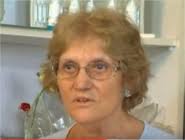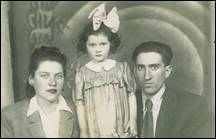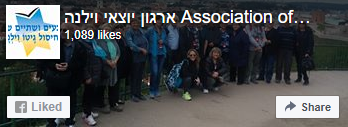Galia Gavish (Eugenia Grobstein)
 Galia Gavish (born January 24, 1944) is an Israeli multidisciplinary artist and curator. Galia Gavish was born Eugenia Grobstein in Tashkent, the Soviet Union (now Uzbekistan), where her parents fled from Poland from the Nazis during World War II. In 1947, her family returned to Poland, and on January 25, 1952 immigrated to Israel.
Galia Gavish (born January 24, 1944) is an Israeli multidisciplinary artist and curator. Galia Gavish was born Eugenia Grobstein in Tashkent, the Soviet Union (now Uzbekistan), where her parents fled from Poland from the Nazis during World War II. In 1947, her family returned to Poland, and on January 25, 1952 immigrated to Israel.
Galia Gavish lived in Jerusalem for many years. In 2011, after retiring, she moved to Tel Aviv.
Gavish studied painting with Arye Elwail at the Urban High School ‘A’ in Tel Aviv and with Mina Ziselman-Blich privately. She studied "Exhibition Design" at the University of Cincinnati in the United States from 1968-69 and art print (engraving) at the Goldsmith's College in London from 1973-74. She also studied curatorial studies at the Tel Aviv University from 1990 to 1992, and management of cultural institutions at the Lahav Institute at the Tel Aviv University in 1994.
From 1965 to 1990 she worked in various architectural firms, including that of Avraham Yasky, Dan Eitan, Moshe Safdie and David Cassuto. During this period, she served on the Jerusalem Municipality's Site Preservation Committee. From 1990-1994, she managed the Negev Museum, and from 1994 until her retirement in 2010, she worked as a director and curator at the Isaac Kaplan Old Yishuv Court Museum in the Old Jewish Quarter of Jerusalem.
Source: Wikipedia
Earrings! / by Galia Gavish (Eugenia Grobstein)
When the Soviets moved into Vilna in the 1930s, they confiscated all the property of my mother’s family, the Levin family, including the jewelry of Grandma Eugenia (Genia - in Hebrew, Galia), Levin nee Takachin. The grandmother was a lady who took care of her appearance. She used two buttons of a dress she sewed and turned them into earrings. The earrings I gave to Yad Vashem are one surviving example.
In 1938, the family moved to Bialystok which was under Polish rule. One day, when the Germans entered Bialystok in 1939, a German shot Grandpa Isaac (Yitzchak). Luckily the bullet passed him by. When he returned home, his hair was completely white. Grandma wasted no time. She packed packages, did not forget to take the earrings, and fled with the family to Samarkand. There she died during a typhus epidemic.
My mother Leah (Lucia) took the plastic earrings and kept watch over them. From Samarkand, the family moved to Tashkent where I was born in 1944. When World War II ended, Polish citizens were required to return to Poland (repatriation). My mother sewed the earrings to the hem of my garment. We spent 6 months on the road until we were taken to Wroclaw (Breslau).
We could not immediately make aliyah to Israel because my father contracted tuberculosis when he was in the Gulag (he was an officer in the Polish army) and also infected me. My father died in October 1951.
My mother packed one suitcase, sewed her jewelry in the inverted lining of my coat. In January 1952, we made aliyah straight to the Ra’anana transit camp where my mother's father, Yitzhak Levin, lived.
After my mother's death in 1968, I kept the earrings and wore them only on special occasions.
In 2008, I hosted a conference of curators from ethnography museums from Peru to Japan. I brought the curators to Yad Vashem. On the same occasion, I donated the earrings to the museum’s collection.
Yehudit Inbar, the museum's chief curator, noted: "Such a small object has behind it such great history."



